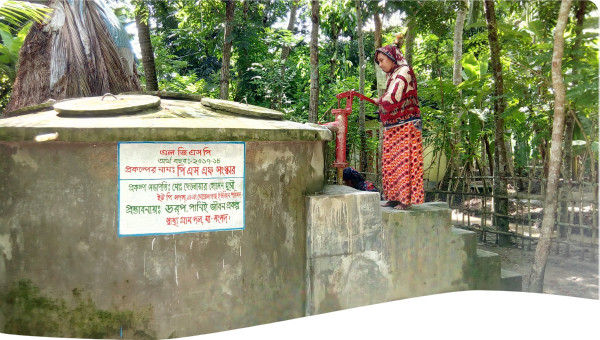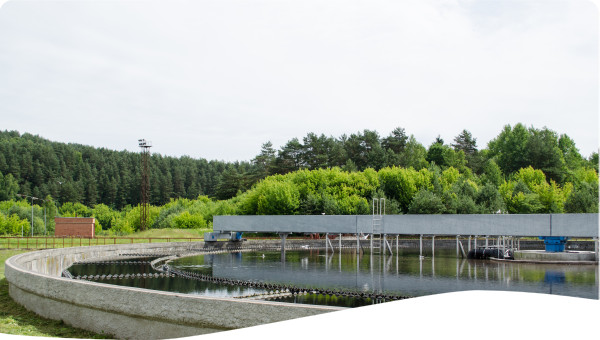Shree Someshwar Education Trust and Devram International developed the Nationwise Rainwater Management Program (NRWM) and partnered with the government of Gujarat to build a demo worth 20,000 USD in the village of Kavas in the district of Surat, India. The village is located near the sea, so groundwaters and farmland around the village have issues with salinity. Kavas was fully dependent on the outsourcing of their freshwater requirements. Project team built 3 groundwater recharge systems and 12 rooftop rainwater harvesting systems around the village. Now, the village is conserving around 30 million liters of rainwater each year and has become self-reliant.
The village of the Kavas is located near the sea, so the groundwater tables and farmland around the village have problems with high salinity. The village was fully dependent on outsourcing of their freshwater requirements. Kavas is surrounded by huge factories consuming water which raised daily conflicts between factories and villagers. Migration of villagers was a routine here. Farmlands near Kavas are losing the salinity of soil along with aquifers.
While developing a NRWM programme, Shree Someshwar Education Trust and Devram International came across many different geographical locations that required specialised attention. Programme was designed according to local geography to include all the relevant structures for the planet, as India has almost all geographical resemblance with the planet. Project team developed small projects by raising funds through private stakeholders and governments.
The project team convinced the Gujarat government and private sector actors around the village to finance an opportunity to demonstrate the results of NRWM programme. This liaison and negotiations took more than 18 months, but finally funding was allocated to develop the NRWM programme at a larger level for up to 20,000 USD.
Shree Someshwar Education Trust and Devram International first conducted surveys of the allotted village, namely Kavas in the district of Surat, India. They identified strategic locations in the village where they could get natural slopes of streets. This identification helped to locate the spot where they needed to build ground water recharge systems with minimal cost. The team also surveyed the permeability, soil structure, salinity of the village's soil and ground aquifers. After all the relevant data collection and surveys, project started gathering materials and professional labour like plumbers, blacksmiths, equipment etc. for implementation. With the help of the village's head administrator, team was able to mobilise villagers in their free time, which helped us with cost reduction.
Then they started building 3 groundwater recharge systems and 12 rooftop harvesting systems for the village. The said systems and devices were enabled with function to protect against contamination. Conserving or recharging rainwater without making it free from various contamination (physical, bacterial, and chemical) would have been detrimental. Achieving balance of odour, colour, PH and TDS of rainwater was also a challenge. But the groundwater recharge systems and RHW Filters were developed with 12 different layers of filtration, before diverted rainwater reach to the cisterns or aquifers.
Each phase of development was supervised by government engineers. Project team had to submit photos and videos of the development regularly along with a written report to these engineers.
Shree Someshwar Education Trust and Devram International also trained farmers in the village on making "organic fertilizers" and "organic pesticides" at home. The said organic fertilizer is a natural paste made of animal wastes and some vegetables which are freely available in village. The said natural paste helps in reducing salinity from soil and also encourages the role of earthworms in soil's moisturization. Earthworms are natural drillers, who drills soil regularly which helps in conserving rainwater within the farm. This natural paste helped in enhancing natural groundwater recharge along with redeveloping soil biodiversity.
After the joint efforts and hard work, team completed the NRWM programme in Kavas within 45 days. Now, the village is conserving more than 30 million liters of "contamination-free" rainwater each year for its own usage. The salinity of groundwater before the installation of NRWM programme was 878 ppm, and within just 1 rainy season, the TDS levels of ground water have already reduced to 671 ppm. This is almost a reduction of 200 ppm and is expected to achieve TDS levels below 500 [drinking water level] within the next 3 rainy seasons.
This is how the programme contributed to the Kavas becoming self-reliant permanently for their own water and water for future generations. The budget for their yearly water outage is now being used on the education of children and other developments in the village. The migration of villagers to cities has decreased. Villages have started producing enough crops to satisfy their needs. Farmlands near Kavas are losing the salinity of soil along with ground aquifers. Clean rainwater collected in cisterns through rooftop RWH Filters is available for villagers for their routine usages. The budget for their yearly water outage is now being used for the education of children and other development projects in the village. The burden of timely water supply on the government work force is reduced, which leads to free time for other development efforts in the region. The NRWM programme in Kavas brought a win-win situation for the government, private sector, farmers, and villagers. It is also observed that the NRWM was able to address 11 SDGs out of 17 effectively.
Politicians and government officials need to clearly undertand the project benefits to support the project implementation and involved on the development stage. Readiness to trade-offs in order to achieve common goals should be the approach among all relevant parties.
 Case studies
Case studies
